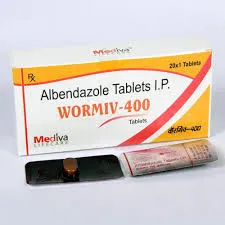- Afrikaans
- Albanian
- Amharic
- Arabic
- Armenian
- Azerbaijani
- Basque
- Belarusian
- Bengali
- Bosnian
- Bulgarian
- Catalan
- Cebuano
- Corsican
- Croatian
- Czech
- Danish
- Dutch
- English
- Esperanto
- Estonian
- Finnish
- French
- Frisian
- Galician
- Georgian
- German
- Greek
- Gujarati
- Haitian Creole
- hausa
- hawaiian
- Hebrew
- Hindi
- Miao
- Hungarian
- Icelandic
- igbo
- Indonesian
- irish
- Italian
- Japanese
- Javanese
- Kannada
- kazakh
- Khmer
- Rwandese
- Korean
- Kurdish
- Kyrgyz
- Lao
- Latin
- Latvian
- Lithuanian
- Luxembourgish
- Macedonian
- Malgashi
- Malay
- Malayalam
- Maltese
- Maori
- Marathi
- Mongolian
- Myanmar
- Nepali
- Norwegian
- Norwegian
- Occitan
- Pashto
- Persian
- Polish
- Portuguese
- Punjabi
- Romanian
- Russian
- Samoan
- Scottish Gaelic
- Serbian
- Sesotho
- Shona
- Sindhi
- Sinhala
- Slovak
- Slovenian
- Somali
- Spanish
- Sundanese
- Swahili
- Swedish
- Tagalog
- Tajik
- Tamil
- Tatar
- Telugu
- Thai
- Turkish
- Turkmen
- Ukrainian
- Urdu
- Uighur
- Uzbek
- Vietnamese
- Welsh
- Bantu
- Yiddish
- Yoruba
- Zulu
10 月 . 22, 2024 03:45 Back to list
Tylosin in Poultry Farming Benefits and Applications for Healthier Livestock
Tylosin for Poultry An Overview of Its Use, Benefits, and Concerns
Tylosin is a macrolide antibiotic commonly used in veterinary medicine, particularly in poultry farming. Known for its effectiveness against various bacterial infections, Tylosin plays a crucial role in promoting poultry health and optimizing production. As the demand for poultry meat and products continues to rise globally, understanding the applications, advantages, and associated concerns of Tylosin in poultry is essential for both producers and consumers.
What is Tylosin?
Tylosin was first discovered in the 1950s as a fermentation product of the bacterium *Streptomyces fradiae*. It was initially employed in the treatment of certain bacterial infections in humans but has since seen extensive use in veterinary medicine, especially in the poultry industry. Tylosin works by inhibiting protein synthesis in bacteria, effectively halting their growth and allowing the immune system to fight off infections.
Applications in Poultry Farming
In poultry, Tylosin is primarily used to manage and prevent infections caused by pathogens such as *Mycoplasma*, which can lead to respiratory diseases and other health issues in chickens and turkeys. The drug is administered through feed or drinking water, making it very convenient for large-scale operations. In addition to treating infections, Tylosin is often used in subtherapeutic doses to enhance feed efficiency and promote growth, a practice that has been widely adopted in the industry.
Benefits of Tylosin Usage
1. Improved Health Outcomes The administration of Tylosin significantly reduces mortality rates associated with bacterial infections in poultry. Healthier birds lead to increased productivity and better-quality meat.
2. Enhanced Feed Efficiency By reducing the incidence of disease, Tylosin allows birds to convert feed more effectively. This results in lower feed costs per unit of meat produced, enhancing profitability for poultry farmers.
tylosin poultry

4. Broad-Spectrum Activity Tylosin is effective against a wide range of pathogens, providing poultry producers with a versatile tool in managing flock health.
Concerns and Challenges
While Tylosin offers several benefits, its use is not without concerns. The increasing reliance on antibiotics in agriculture has raised alarm regarding antibiotic resistance. The overuse or improper use of antibiotics can lead to the development of resistant bacterial strains, posing risks to both animal and human health. This issue has prompted regulatory bodies in various regions to reconsider the use of antibiotics in livestock production.
Another concern is the potential transfer of antibiotic residues to poultry products, which can affect human consumers. Established withdrawal times after Tylosin treatment are essential to ensure that residues are sufficiently cleared from the animals’ systems before they are processed for meat.
Regulatory Landscape
Governments and agricultural agencies are increasingly scrutinizing the use of antibiotics in livestock. In the European Union, for instance, strict regulations regarding veterinary drug use have been enacted, aiming to reduce antibiotics in animal farming. Poultry producers must adhere to these regulations, which can include limits on the use of Tylosin and other antibiotics, promoting alternative practices such as improved biosecurity, vaccination, and better herd management to maintain animal health without heavy reliance on medications.
Conclusion
Tylosin remains an important tool in poultry farming, offering substantial benefits in terms of disease management and production efficiency. However, with the growing challenges of antibiotic resistance and regulatory pressures, it is crucial for poultry producers to use this antibiotic judiciously. The future of poultry health may lie in a balanced approach, incorporating Tylosin's benefits while embracing alternative strategies to maintain animal welfare and product safety. As the industry evolves, ongoing research and dialogue among stakeholders will be vital in navigating the complexities associated with antibiotic use in poultry.
-
The Power of Radix Isatidis Extract for Your Health and Wellness
NewsOct.29,2024
-
Neomycin Sulfate Soluble Powder: A Versatile Solution for Pet Health
NewsOct.29,2024
-
Lincomycin Hydrochloride Soluble Powder – The Essential Solution
NewsOct.29,2024
-
Garamycin Gentamicin Sulfate for Effective Infection Control
NewsOct.29,2024
-
Doxycycline Hyclate Soluble Powder: Your Antibiotic Needs
NewsOct.29,2024
-
Tilmicosin Premix: The Ultimate Solution for Poultry Health
NewsOct.29,2024













